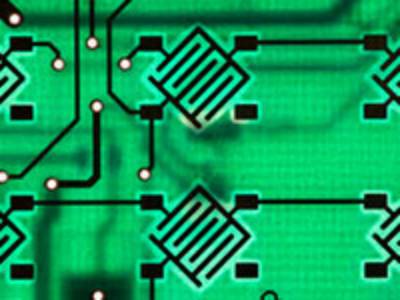Bistatic Radar for Tracking a Moving Target
Security and surveillance concerns have led to interest in remotely tracking a moving target in situations in which there is no line of sight, such as a different room. With this technology, a signal of opportunity can be utilized to determine the target’s position and trajectory while simultaneously reducing the ability of the target to detect tracking attempts. By using a fixed radio frequency (RF) transmission signal in tandem with separate receivers positioned in an array of locations around the area of interest, the Doppler shift of the signal reflected by the moving target may be received. The extracted Doppler shift can be processed to determine the position and velocity of the target.
Problem
Tracking a moving target where there is no line of sight is difficult and usually requires generation of an RF or infrared frequency transmission. Introduction of a new signal into a given environment with no line of sight allows for a target to be tracked, but also enables a wary or prepared target to detect the produced signals.
Solution
Utilization of a signal of opportunity eliminates the need to generate and introduce new signals into the target’s environment. By using an array of receivers in rooms or areas around the environment of interest, a Doppler shift can be analyzed from the signal of opportunity as reflected by the target. Signal processing techniques developed by USU researchers allow for real-time tracking of the target as it moves within the environment of interest though calculation of the target’s position and velocity.
Benefits
Implementation of this technology allows users to remain more covert than is possible through use of more traditional technologies. Additionally, this technology is well suited for remote use and control, and the minimal hardware required for the use of this technology may provide for significant reduction in costs compared to existing technology.
Applications
This technology can be used in surveillance applications, especially for indoor surveillance in conditions with no line of sight between the tracking device and the target. This technology is well suited for tracking of RF-reflective robots, drones, or other autonomous robots or vehicles in warehouses or other industrial environments with no line of sight.

Contact
Questions about this technology including licensing availability can be directed to:
Alan Edwards, MA, JD
Manager, Technology Transfer Services
(435) 797-2328
alan.edwards@usu.edu
USU ID C20027
Development Stage
TRL3

